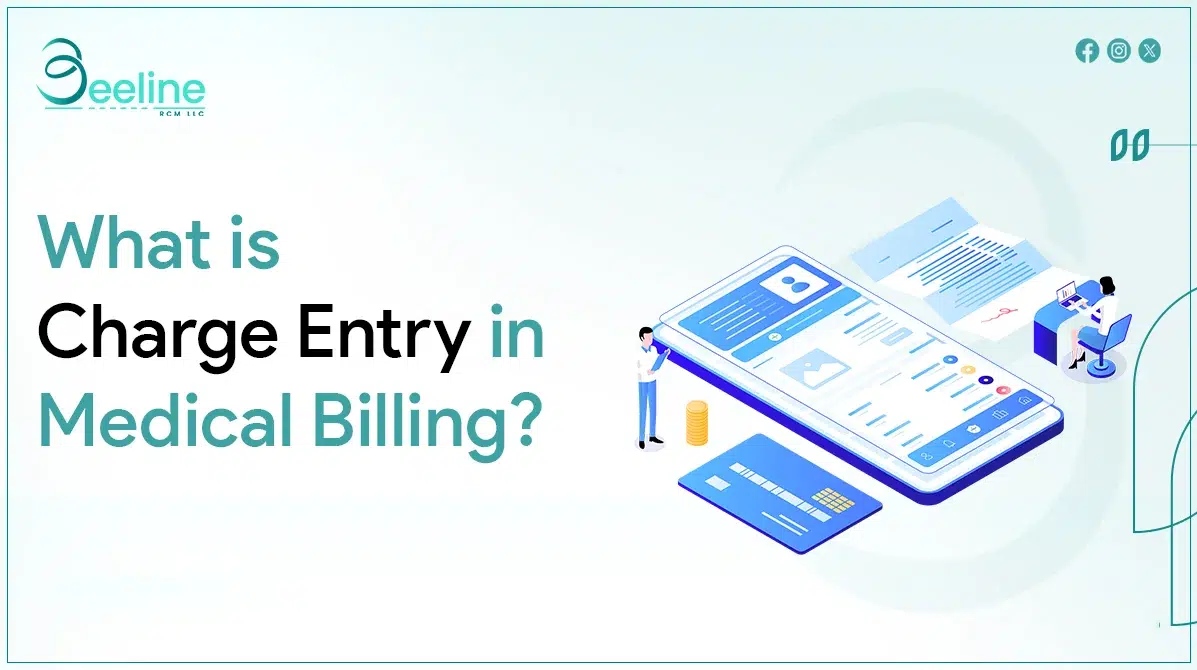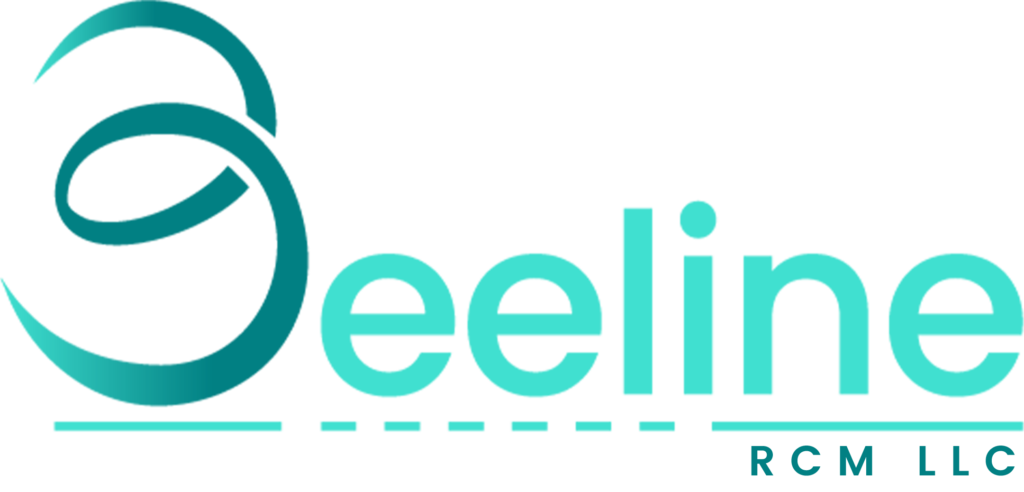
What is Charge Entry in Medical Billing?
In the complex world of medical billing, charge entry is one crucial step that ensures healthcare providers receive proper reimbursement for their services. This process is foundational to the billing cycle, bridging patient care and financial compensation. To understand the significance and intricacies of charge entry, let’s delve into its definition, process, and impact on medical billing.
Understanding Charge Entry in Medical Billing
Charge entry in medical billing is the process of entering and recording charges for medical services provided to patients. It involves inputting details such as patient information, billing codes, and service dates into the healthcare provider’s billing system. Accurate charge entry is essential for generating claims that are submitted to insurance companies for reimbursement.
The Importance of Charge Entry in the Billing Cycle
Charge entry plays a pivotal role in the medical billing cycle. Claims can be delayed, denied, or underpaid without precise and timely charge entry. This process ensures that every service provided is accounted for and billed correctly. Healthcare providers can maximize their revenue and maintain a steady cash flow by accurately capturing all billable services.
Steps Involved in Charge Entry
The charge entry process involves several detailed steps to ensure accuracy and efficiency:
1. Collecting Patient Information
The first step in charge entry is gathering comprehensive patient information. This includes:
- Patient’s name
- Date of birth
- Insurance details
- Contact information
- Medical history
Accurate patient information is crucial as it forms the foundation for the entire billing process. Any errors at this stage can lead to significant issues later on, such as claim denials or payment delays.
2. Reviewing Documentation
Accurate charge entry relies on thorough documentation. Medical coders review clinical notes, treatment plans, and diagnostic results to identify all billable services. They ensure that the documentation supports the services provided. This step involves:
- Reviewing physician notes to identify procedures and services provided.
- Cross-checking treatment plans to ensure all services are accounted for.
- Analyzing diagnostic results to assign appropriate billing codes.
3. Assigning Billing Codes
Medical coders assign appropriate billing codes to each service rendered. These codes include:
- Current Procedural Terminology (CPT) codes: Describe a wide range of medical, surgical, and diagnostic services.
- International Classification of Diseases (ICD) codes: Indicate diagnoses and conditions.
- Healthcare Common Procedure Coding System (HCPCS) codes: Supplementary codes for non-physician services.
Assigning the correct billing codes is critical as these codes determine the reimbursement rates. Incorrect coding can lead to underbilling or overbilling, impacting the financial health of the healthcare provider.
4. Entering Charges into the System
Once the billing codes are assigned, the next step is entering these charges into the billing system. This involves:
- Entering patient demographics such as name, age, and insurance details.
- Inputting service dates to ensure accurate billing.
- Recording billing codes to capture all services provided.
5. Verifying and Validating Charges
Before finalizing the charge entry, verifying and validating the information is crucial to ensure accuracy. This step involves:
- Checking for data entry errors to avoid claim denials.
- Confirming that all services are billed to ensure no revenue is lost.
- Ensuring compliance with insurance policies to prevent claim rejections.
6. Submitting Claims
After verifying the charges, the claims are generated and submitted to insurance companies for reimbursement. This step requires:
- Formatting claims according to payer requirements to ensure acceptance.
- Submitting claims electronically or via paper forms to expedite processing.
Challenges in Charge Entry
Despite its importance, charge entry can be fraught with challenges. Some common issues include:
Data Entry Errors
Manual data entry can lead to errors such as incorrect patient information, wrong billing codes, or duplicate entries. These mistakes can result in claim denials or delays.
Incomplete Documentation
If the clinical documentation is incomplete or unclear, assigning the correct billing codes can be difficult, leading to underbilling or overbilling.
Compliance Issues
Healthcare providers must comply with various regulations and payer policies. Failing to adhere to these rules can result in claim rejections or audits.
Complex Coding Systems
The medical billing coding systems are complex and constantly evolving. Keeping up with CPT, ICD, and HCPCS code changes requires ongoing education and training.
Technological Challenges
Integrating electronic health records (EHR) with billing systems can sometimes be problematic. Discrepancies between systems can lead to errors in charge entry.
Volume of Work
High patient volumes and many services can overwhelm billing staff, leading to mistakes and oversights.
Best Practices for Effective Charge Entry
To ensure accurate and efficient charge entry, healthcare providers should adopt the following best practices:
1. Implementing Robust Training Programs
Providing comprehensive training for medical coders and billing staff is essential. This includes regular updates on coding changes, compliance requirements, and billing software. Well-trained staff are less likely to make errors and more likely to stay current with industry standards.
2. Utilizing Advanced Billing Software
Investing in advanced billing software can streamline the charge entry process. Features like automated coding, real-time validation, and error checking can significantly reduce manual errors. Advanced software can also integrate seamlessly with EHR systems, ensuring smooth data transfer and minimizing discrepancies.
3. Conducting Regular Audits
Regular audits of the charge entry process can help identify and rectify errors. This includes reviewing a sample of claims for accuracy and compliance with payer policies. Audits can also uncover patterns of mistakes, allowing for targeted training and process improvements.
4. Enhancing Communication
Effective communication between healthcare providers, coders, and billing staff is crucial. Clear documentation and open lines of communication can ensure that all services are accurately recorded and billed. Day to day meetings and feedback sessions can help address any issues promptly.
5. Staying Updated on Coding Changes
Keeping abreast of changes in billing codes and regulations is vital. Subscribing to industry newsletters, attending coding workshops, and participating in professional organizations can help you stay informed. Regular updates ensure that billing practices remain compliant and accurate.
6. Implementing Quality Control Measures
Establishing quality control measures such as double-checking entries, using validation software, and cross-referencing patient records can help reduce errors. Quality control measures ensure errors are caught early before claims are submitted.
7. Developing Standard Operating Procedures (SOPs)
Creating and maintaining SOPs for charge entry can provide clear guidelines for staff to follow. SOPs can standardize processes, reduce variability, and ensure consistency in charge entry practices.
The Role of Technology in Charge Entry
Technology is crucial in modernizing the charge entry process and minimizing errors. Here are some technological advancements that can enhance charge entry:
Electronic Health Records (EHR)
EHR systems streamline the process of capturing and storing patient information. They facilitate easy access to patient records and clinical documentation, enabling accurate and timely charge entry.
Automated Coding Software
Automated coding software can analyze clinical documentation and assign appropriate billing codes. This reduces the reliance on manual coding and minimizes errors. Some advanced systems also offer predictive coding, suggesting the most likely codes based on the documentation.
Real-Time Data Validation
Real-time data validation tools can check entries as they are made, flagging potential errors or inconsistencies. This allows for immediate corrections, reducing the chances of claim denials.
Integrated Billing Systems
Integrated billing systems connect various components of the billing process, from charge entry to claim submission. They ensure seamless data flow and reduce the risk of discrepancies between different systems.
Artificial Intelligence (AI) and Machine Learning
AI and machine learning can analyze large volumes of data to identify patterns and predict potential errors. These technologies can also provide insights into improving the charge entry process and enhancing accuracy.
The Impact of Accurate Charge Entry on Revenue Cycle Management
Accurate charge entry has a direct impact on the overall revenue cycle management (RCM) of healthcare providers. Key benefits include:
Reduced Claim Denials
Precise charge entry minimizes errors and omissions, leading to fewer claim denials. This ensures a smoother reimbursement process and reduces the administrative burden of reworking claims.
Improved Cash Flow
Timely and accurate charge entry accelerates the claims submission process. This leads to faster reimbursements, improving healthcare providers’ cash flow and financial stability.
Enhanced Compliance
Adhering to accurate charge entry practices ensures compliance with payer policies and regulatory requirements, reducing the risk of audits, penalties, and legal issues.
Increased Patient Satisfaction
Efficient charge entry contributes to transparent and accurate billing. Patients receive clear and correct bills, enhancing their satisfaction and trust in the healthcare provider.
Optimized Resource Utilization
By reducing errors and streamlining the billing process, healthcare providers can optimize the use of their resources. This includes minimizing the time spent on reworking claims and allowing staff to focus on more critical tasks.
Strengthened Financial Health
Accurate charge entry ensures that all services are billed appropriately, maximizing revenue. This strengthens the financial health of healthcare providers, enabling them to invest in better patient care and advanced technologies.
Future Trends in Charge Entry and Medical Billing
The field of medical billing, including charge entry, is continuously evolving. Here are some future trends that are likely to shape the industry:
Increased Automation
Automation is set to play a larger role in medical billing. Advanced algorithms and machine learning will handle
routine tasks such as data entry, coding, and claim submission, allowing billing staff to focus on more complex issues and strategic initiatives.
Integration of Telehealth Services
The rise of telehealth services has implications for charge entry and medical billing. As virtual healthcare becomes more prevalent, billing systems must accommodate remote consultations and telemedicine visits. This includes capturing charges for telehealth services and ensuring compliance with billing regulations specific to virtual care.
Focus on Data Analytics
Data analytics will be increasingly important in optimizing charge entry and revenue cycle management. Healthcare providers will leverage analytics tools to identify trends, track key performance indicators, and identify areas for improvement. By harnessing data insights, providers can enhance efficiency, reduce costs, and maximize revenue.
Enhanced Interoperability
Interoperability between different healthcare systems and platforms will be critical for seamless charge entry and billing processes. Efforts to standardize data exchange protocols and improve interoperability will enable smoother integration between electronic health records, billing systems, and third-party applications.
Embrace Value-Based Care Models
The shift towards value-based care models will impact charge entry and medical billing practices. Providers will focus on delivering high-quality care and achieving positive patient outcomes rather than maximizing billable services. This paradigm shift will require adjustments to billing practices to align with value-based reimbursement models.
Rise of Artificial Intelligence
Artificial intelligence (AI) will continue revolutionising charge entry and medical billing processes. AI-powered solutions will automate repetitive tasks, enhance accuracy, and identify patterns to optimize billing workflows. From automated coding to predictive analytics, AI technologies will drive efficiencies and improve revenue cycle performance.
Conclusion
In conclusion, charge entry is critical to the medical billing process, ensuring healthcare providers receive proper reimbursement for their services. By accurately capturing charges, healthcare organizations can optimize revenue cycle management, minimize claim denials, and enhance patient satisfaction. By adopting best practices, leveraging advanced technologies, and staying abreast of industry trends, providers can navigate the complexities of charge entry and position themselves for success in an ever-evolving healthcare landscape
